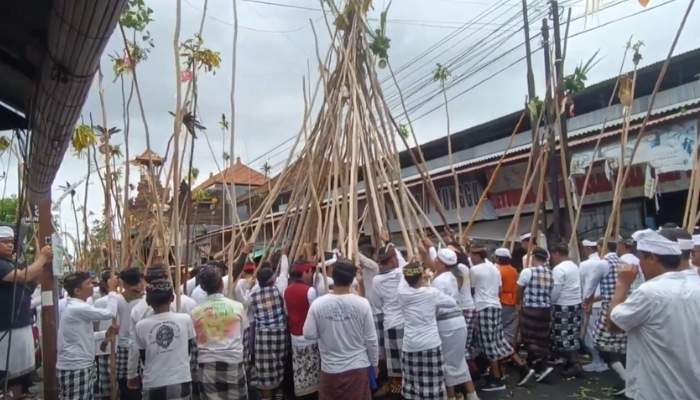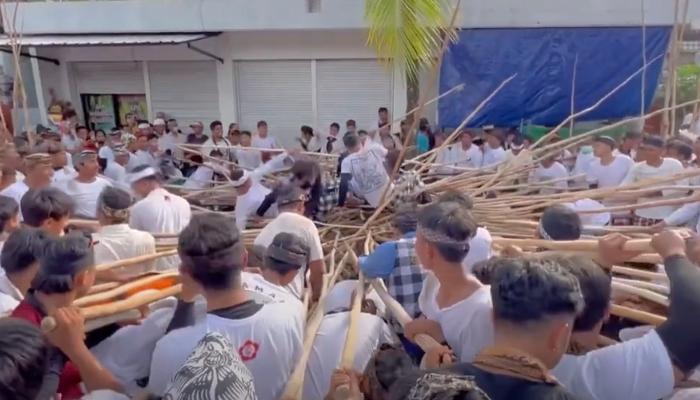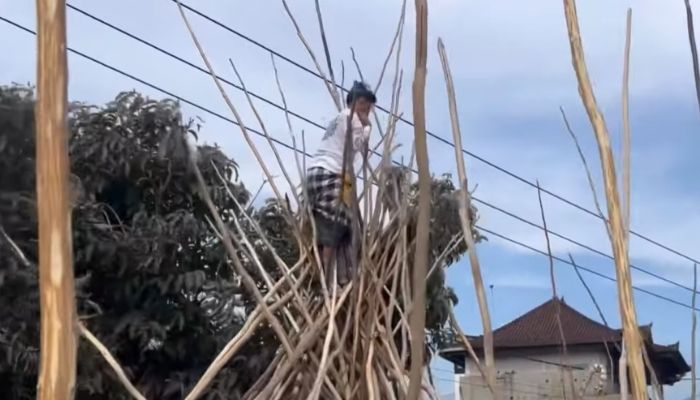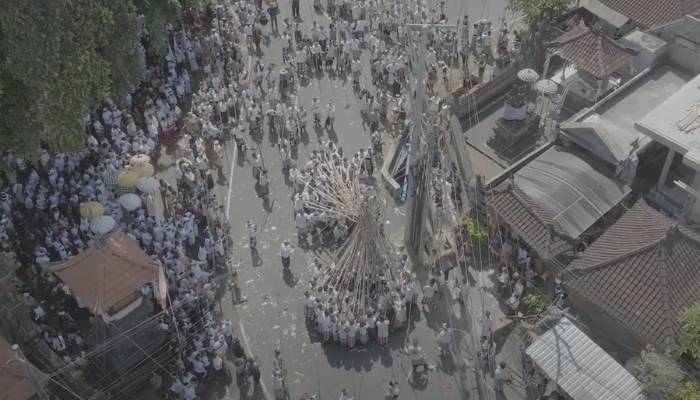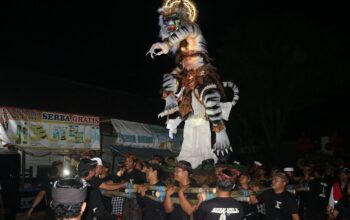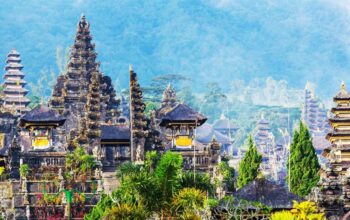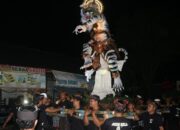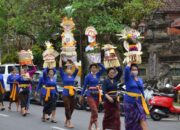Discovering the Mekotek Tradition
Amid the rapid tide of modernization and changing times, there are traditions that continue to endure—thriving and growing within the spirit of their people. One such tradition is Mekotek, a unique ritual originating from Munggu Village, in Mengwi District, Badung Regency, Bali.
At first glance, Mekotek might look like a “mock battle” between groups of men pushing against each other with wooden sticks. But behind the clashing sounds of wood and the energetic shouts lies a deeper meaning, rich with values of bravery, unity, and respect for ancestors.
The History and Origins of Mekotek
Mekotek, also known as Ngerebek, stems from a Hindu religious ceremony aimed at warding off evil spirits believed to bring disease or disaster. According to the elders of Munggu Village, the tradition has been practiced since the era of the Mengwi Kingdom, around the 17th century.
Back then, the people of Munggu demonstrated their loyalty to the kingdom by organizing a grand ritual involving all the village’s men. They carried wooden sticks (typically made from pulet or albasia wood) and formed a cone-shaped structure, pushing against each other in unison.
This was not an act of violence, but rather a symbol of solidarity and fighting spirit.
The Deeper Meaning Behind Mekotek
The name “Mekotek” comes from the tek-tek sound produced when the sticks collide. However, this tradition is much more than just a clashing of wood.
For the people of Bali—especially those from Munggu—Mekotek holds profound meaning:
1. A Symbol of Courage and Ancestral Spirit
When the men of the village gather and push against each other with their sticks, they are not merely performing a ritual. They are breathing life into the spirit of their brave ancestors—a reminder that courage and unity are priceless inheritances to be preserved.
2. A Ritual to Ward Off Misfortune
Mekotek is held every 210 days, precisely on Kuningan Day (the day after Galungan). In the Balinese calendar, this marks the return of ancestral spirits to the heavens.
Mekotek becomes a moment to pray for protection, prosperity, and freedom from plagues and negative forces.
3. Bridging Generations
One of the most touching aspects of Mekotek is how it unites young and old.
Children watch, young men participate in the “battle,” and elders give their blessings and ensure the safety of the event.
It’s more than a ritual—it’s a living school of values and character.
The Mekotek Ceremony
Mekotek usually takes place every six months, on Saturday Kliwon during the Kuningan celebrations. Like many Balinese traditions, it starts with a religious ceremony. Here’s the general sequence:
1. Communal Prayer
On the morning of the event, all residents gather at the village temple (Pura Desa) for a collective prayer, asking for safety, smooth proceedings, and divine protection.
This is a solemn moment before the vibrant ritual begins.
2. Preparing the Mekotek Sticks
The sticks, usually 2–3 meters long, are made from lightweight yet strong wood. Each participant brings their own stick, treating it like a personal spiritual weapon.
3. Procession and Symbolic Battle
After prayers, participants walk together from their homes to the center of the village, gathering at a large field or crossroads.
Here, the most anticipated moment unfolds: sticks are joined into a cone formation, and groups of men begin pushing against one another.
Cheers, laughter, and fiery spirit fill the air.
While it looks physically intense, there’s no intent to harm.
If someone falls, others quickly help them up. It’s a “battle of affection,” not hostility.
4. The Climax and Closing
After several rounds of pushing, the ceremony concludes with symbolic dances and a final prayer.
Local priests sprinkle holy water over the participants, symbolizing purification.
Everyone returns home with light hearts and a deep sense of pride.
When Mekotek Was Forbidden
During the Dutch colonial era, around 1915, Mekotek was banned, considered too wild and dangerous.
The colonial government feared it might spark rebellion or symbolize resistance.
Ironically, the ban brought misfortune.
Without Mekotek, Munggu Village was struck by an unusual outbreak of disease, causing many deaths. Elders believed this misfortune stemmed from a broken spiritual connection with the ancestors and the natural world.
As a result, Mekotek was revived in 1937 and has been faithfully continued ever since—even during the COVID-19 pandemic, with strict health protocols in place.
The Emotional Spirit Behind Mekotek
Many who witness Mekotek firsthand find themselves moved to tears—not from sadness, but from the overwhelming spiritual energy.
There’s a powerful bond between people, ancestors, and nature that words cannot fully capture.
As Pak Wayan, a lifelong Mekotek participant, says:
“If I don’t join Mekotek, it feels like a part of my soul is missing.
This isn’t just a ceremony—it’s the breath of our life.”
Mekotek in the Eyes of the Younger Generation
Interestingly, the youth of Munggu Village don’t see Mekotek as an outdated tradition.
Instead, they take great pride in being part of this cultural heritage.
Many prepare months in advance—training, staying fit, and caring for their sticks.
Social media has also helped Mekotek gain global attention.
Videos of the ritual often go viral on TikTok, Instagram, and YouTube, showing that tradition and technology can coexist beautifully when fueled by love and commitment.
Tourists and Mekotek
In recent years, Mekotek has become a unique cultural attraction for both domestic and international tourists.
However, the people of Munggu are careful to maintain the sacredness of the tradition.
Visitors are welcome to watch and learn about the ritual’s background and meaning, but they are not permitted to participate directly—out of respect for the deep spiritual and cultural values behind it.
Conclusion
Mekotek is not just a ritual; it’s a manifestation of the Balinese collective spirit—honoring courage, unity, and spirituality.
Amid the waves of globalization and change, this tradition serves as an anchor—preserving identity and nurturing the bonds of love between generations.
Within every tek-tek of colliding sticks echoes a profound message:
We do not live alone.
We are part of something much greater—our ancestors, nature, and the community that holds us together.
As long as Mekotek continues, so too will the burning spirit of unity and Balinese culture.
